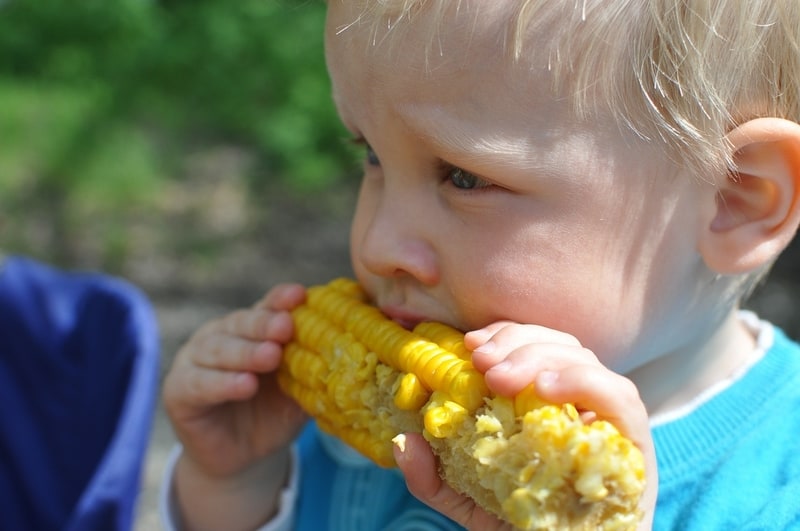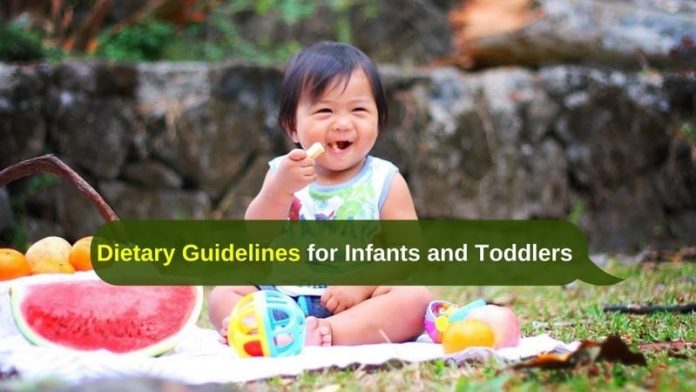In our interview with Ready, Set, Food! Co-founder and Chief Allergist Katie Marks-Cogan, MD, she discussed the details of the new USDA Guidelines on food allergy prevention, why it’s so important to raise awareness for these new guidelines, and how parents can follow these guidelines at home.
What are the 2020 USDA Dietary Guidelines and why are they important for families?
Millions of Americans already use the USDA guidelines to help them make decisions about nutrition and diet. This year is the first time that the guidelines are being given for the 0-2 year age group, and that happened because of a congressional mandate to create guidelines for this age range.
Given the importance of diet and nutrition in this age range, and all of the science that’s come out about food allergy prevention and early sustained allergen introduction, it’s really exciting to see new guidelines come from the USDA about how to prevent food allergies for babies.
What are the key recommendations for infants and toddlers?

One of the key recommendations the USDA makes is that all babies should eat allergenic foods like peanuts and eggs frequently as part of their diet starting at four months of age to help prevent food allergies. For an allergist, like myself, this is something that we’ve been telling our patients and families for years now because we know about the groundbreaking research that basically demonstrates that we can prevent hundreds of thousands of food allergies and children every year. This is already settled science, and that’s why it’s so significant to help get that information to parents as part of the USDA guidelines.
Why was it so important to include food allergy prevention recommendations in the USDA guidelines?
Dr. Jonathan Spergel, leading allergist and one of our medical advisors at Ready, Set, Food!, spearheaded the petition to include food allergy prevention in the guidelines. The interesting thing to note is that Dr. Spergel was able to garner support from several top experts in food allergy within a very short period of time because of the already widespread support for early allergen introduction. He was able to get 14 of the top allergy experts in the US to sign on to the letter, all in about 72 hours—which demonstrates that there is a desire in the medical community to help teach more parents about preventing childhood food allergies.
This was underscored by a recent survey published that revealed that fewer than 1 in 3 pediatricians are following food allergy prevention guidelines. This indicates that there is still a lack of awareness and education in the medical community and there is still more work to be done to effectively shine a light on food allergy prevention. That’s why the USDA Dietary Guidelines are an important breakthrough in raising awareness for food allergy prevention, with the ability to transform the lives and health of millions of Americans.
What is the evidence for these new recommendations on food allergy prevention?
Landmark studies (LEAP, EAT, PETIT) that were published in 2015 and 2016 in the New England Journal of Medicine and in the Lancet showed that a baby’s risk of developing common food allergies can be reduced by up to 80% through early and frequent exposure to allergenic foods. This evidence has been so strong and convincing that it lead to new medical guidelines both in the US and internationally, telling parents they should feed allergenic foods to their baby to help prevent food allergies.
Is introducing allergens at 4 months of age safe?
It’s a really great question because what we know from all of the research is that infancy is actually the safest time to be introducing allergenic foods. If your baby is going to have a reaction under 1 year of age, in all likelihood it is going to be mild. That is why the new USDA recommendations are for all babies, because we know that it’s the safest time to be doing it. There is great new research that looked at all of the public records with regards to food allergy reactions, severity and fatality. There have been no fatal reactions in infants to date in all of the public data in the US and in the UK, which helps strengthen the idea that early allergen introduction is safe for all babies.
How does Ready, Set, Food! align with these new USDA Guidelines?
Our mission at Ready, Set, Food! has always been to empower parents with the tools to help protect their baby from a food allergy. Many parents struggle with implementing the new guidelines because it can be hard to frequently feed your baby multiple allergenic foods in the right amount, which is why Ready, Set, Food! makes a powder with key allergens that dissolves easily in your baby’s bottle of breastmilk or formula.
We’re excited that Ready, Set, Food! makes it easy to follow the guidelines from the AAP, NIAID and now the USDA on food allergy prevention, so that every baby can have the best chance of not developing severe food allergies.
About Katie Marks-Cogan, M.D.: Dr. Marks-Cogan is board certified in Allergy/Immunology and Internal Medicine, and treats both pediatric and adult patients. Originally from Cleveland, Ohio, she received her M.D. with honors from the University of Maryland School of Medicine. She then completed her residency in Internal Medicine at Northwestern and fellowship in Allergy/Immunology at the prestigious University of Pennsylvania and Children’s Hospital Pennsylvania (CHOP). After finishing training, she moved to Southern California where she works in private practice and is the owner of Clear Allergy. She is also Chief Allergist and a member of the scientific advisory board for Ready, Set, Food! She has numerous media appearances and has authored many articles pertaining to topics in the field of allergy. She currently resides in Los Angeles with her husband, 5-year-old son, and 2-year-old daughter where she enjoys hiking, building LEGO castles with her kids, and cooking with her family.
Read Also:













